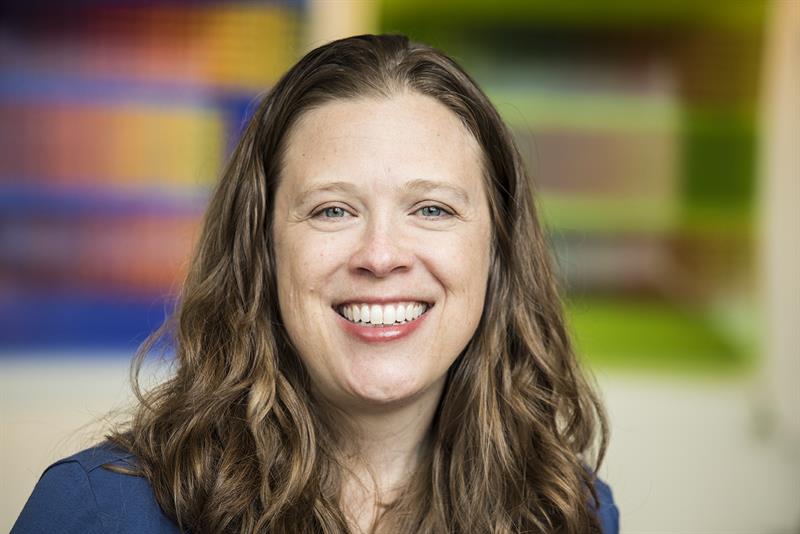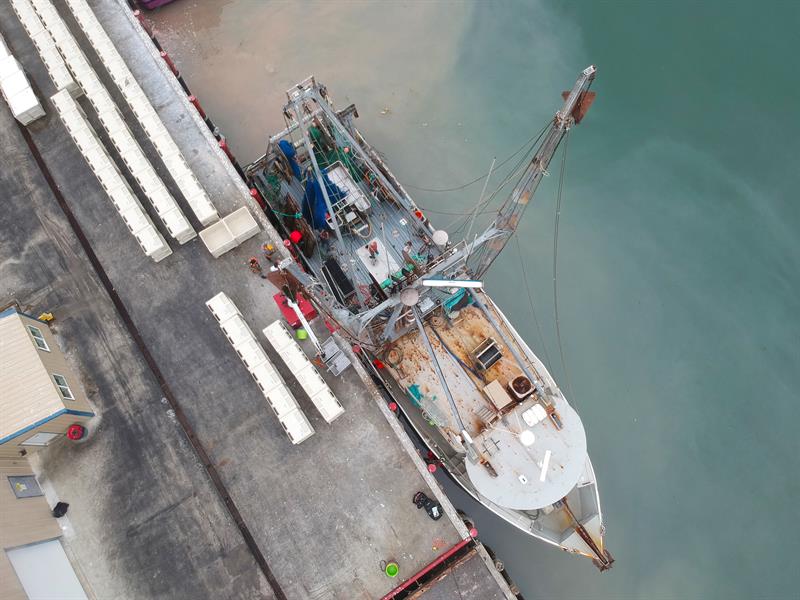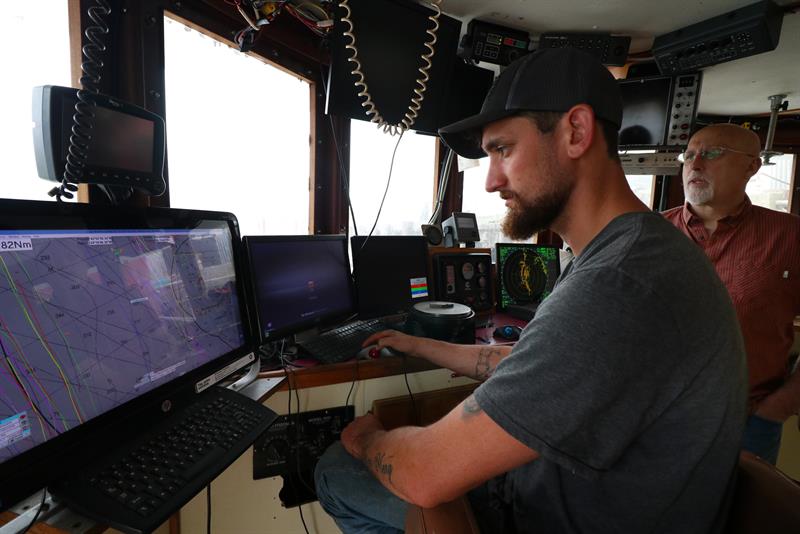At this year’s World Ocean Summit, held in Abu Dhabi, the Environmental Defense Fund (EDF) announced the launch of its Smart Boat Initiative, an initiative that’s intended to accelerate the exploration and adoption of powerful new technologies to improve sustainability, efficiency and profitability in the fishing sector.
Speaking at the launch Katie McGinty, Senior Vice President, of the EDF Oceans programme said, “Just as smart phones provided a platform for a wave of innovation, we believe there is an equally unprecedented opportunity to usher in a new era of sustainability in the global fishing sector led by a digital transformation.”
The initiative looks to focus on leveraging technological advances and the falling costs of sensors, artificial intelligence, broadband communication and data analytics. The project aims to equip and surround fishing vessels of all sizes with digital tools and infrastructure that can help support sustainability, but also encourage greater accountability and transparency in terms of how fishing is conducted.

EDF is a powerful voice in conservation and was established over 50 years ago. Its Executive Vice President, Amanda Leland, oversees its core programmes which include: Climate, Energy, Health, Ecosystems, and Oceans.
“The EDF appeared in 1967 and our first serious campaign was in countering the use of the pesticide DDT. Formed by a group of committed environmentalists and scientists and after years of successful campaigning, it succeeded in securing a nationwide ban,” Leland explains.
| “Technology has been held responsible for many of the problems confronting the fishing industry. Perhaps, it can now solve them.” Amanda Leland |
Since then, the EDF has expanded to become a global force for environmental change.
“In the 1990s, we pioneered corporate partnerships and some of the first interactive uses of online communications,” Leland says. “We’re a non-profit organisation and now represent more than two million members.”
The organisation’s pioneering work with corporations has been widely applauded. “We stay strong, in terms of our core beliefs,” according to Leland, while EDF works to build collaborative environmental coalitions of disparate groups and, because it doesn’t accept funding from corporate partners, is able to retain its independence and set challenging goals.
Now the EDF is embracing, what Leland calls, the ‘The Fourth Wave of Innovation.’
Fred Krupp, the president of EDF, described the Fourth Wave as, “A megatrend that’s unfolding all around us - in EDF’s work and across the environmental community. It’s a revolution in environmental progress driven by innovation and technology that gives people the power to take action. It has the power to transform how we solve environmental problems.”
“In practical terms, it’s about the use of technology to obtain data and use the information derived from it to drive greater accessibility and transparency and to be more effective at getting people to act and find better solutions to the environmental challenges confronting us,” says Leland.
“EDF is global as we are working on the biggest and most pressing global environmental problems and, as such, need to operate at that scale,” explains Leland. “Technology is helping to grow our reach and to transcend geographical limits.”
Last year the EDF unveiled ambitious plans to develop and launch a new satellite purpose-built to identify and measure methane emissions from human-made sources worldwide, starting with the oil and gas industry.
“Data from MethaneSAT is intended to give both countries and companies data to spot problem areas, identify savings opportunities, and measure their progress over time,” according to Leland. “It’ll provide reliable, fully transparent data on a worldwide scale.”
It’s this use of technology that is helping to drive the Fourth Environmental Wave, explains Leland but despite the benefits technology can bring whether it will fully deliver is still open to debate.

| The Smart Boat Initiative from EDF is intended to use technology to address the environmental and conservation challenges confronting the fishing industry |
“Crucially, the impact technology will have will be determined by our ability to translate data into useful information and then into actions. Do that and people will start to see the value of engagement. It’s a tough nut to crack but if we succeed, we will help to drive greater social mobilisation and environmental advocacy.”
Looking to the ‘bigger picture’ there is certainly more interest and engagement in conservation and the problems of climate change.
“Global warming is a global crisis but while people believe there is a problem, they are not seeing the leadership needed to address it. I believe that while people have hope and belief that we need and can do something, there’s a growing sense of despair and drift that we are not addressing these problems seriously.”
Small Boat Initiative
The Smart Boat Initiative is an example of how EDF wants to use technology to better address some of the massive environmental challenges confronting the world.
“While over fishing is one of the biggest threats to the world’s oceans, it is solvable,” explains Leland. “And, if we can solve that, then

both our oceans and the wildlife they support will be so much more resilient to cope with climate change. It’s a challenge but it is
certainly fixable.”
Billions of people are dependent on fishing, not only because it is their main source of protein but because they only have limited access to other food options.
“We want to be able to support people locally. To feed the planet, meeting people’s needs where they are,” says Leland. She concedes that for some, “Technology has been responsible for many of the problems confronting the fishing industry, so our intention is to use technology to address and solve those same problems.”
Creating fleets of ‘smart boats’ will help to generate new levels of information in real time |
Leland makes the point that a lot of progress has been made in figuring out where boats are and the activities they are undertaking, through the use of satellite technology.
“Global Fish Watch, an environmental group, has been doing a lot of interesting work in this space,” Leland says.
Vessel Monitoring System (VMS) data is used by most nations to track commercial fishing activity in their waters, but that data tends to be owned by national governments and is not widely available.
Global Fish Watch has partnered with governments to publish their VMS data on what the organisation describes as a fishing activity map.
Peru and Indonesia have been recent partners and both Costa Rica and Panama have now committed themselves to joining the programme.
The use of VMS is particularly important when it comes to greater transparency and dealing with the issue of trans-shipment, which is a poorly regulated activity involving refrigerated cargo vessels that gather catches from multiple fishing boats while at sea for transfer to port, and provides an opportunity for overfishing and illegal fishing.
“Data sources are key to greater transparency and better conservation,” says Leland. “It’s important that we are able to understand and identify patterns in vessel behaviour but while this information can be gleaned from satellites - the ‘eyes-in-the-skies’ - we also need much greater resolution.
“What I mean by that, is that we need what I call ‘data-from-the-decks’, so we can better understand what fish is being caught, by whom and what species are being taken from the oceans.
“That level, or granularity, of information is critical to formulating policy, setting catch limits and providing transparency across the supply chain. It will also help consumers better understand the providence of the fish they consume.”
It’s not just about sustainability but making the industry profitable and viable in the long term.
Just a small percentage of the more than 10,000 fisheries around the world use rich data streams and sophisticated science, according to EDF, and most fisheries don’t even monitor what they catch.
Those that do collect monitoring data do so by using paper forms, which someone must transcribe into spreadsheets and then prepare for analysis. The process can take months and it is fertile ground for mistakes or deliberate misrepresentation.
The use of onboard computers will help to leverage advances in data analytics to process and analyse more data while both satellite and cellular modems will be able to transmit data products to scientists, managers and seafood buyers in real time.
According to Leland, “Our focus is on providing verifiable catch data, which means certainty for the supply chain and when it comes to compliance that all fishermen are meeting agreed fishing limits and that everyone is playing by the same rules. It means that we can ensure that fishermen are hauling up a catch they can actually keep.
“Not only is it about saving wildlife but, crucially, it improves the bottom line for fishermen.”
EDF is deploying the technology on a small fleet of ships and at different levels.
A project in the Pacific Northwest is using the technology in larger ships while a Gulf of California project, in Mexico, is using solar powered devices on smaller fishing boats.
“We believe that a core component in these projects is about raising fisherman’s interest and we need to encourage them to engage with the technology as we develop what is useful to them.
“The West Coast approach appears to work as it is replacing the need for observers, and that’s a sizeable overhead, while streamlining operations. It also addresses the issue of greater accountability.”
Leland doesn’t expect a one size fits all approach and as a result a number of different pilots are underway.
“The trial in Mexico takes a different approach. The use of technology is more limited as we are looking to help artisanal boats.”
The technology being deployed is scalable but is intended to be comprehensive, including: high tech video cameras that are able to catch high resolution images, GPS antennas to provide location data, hydraulic and rotational sensors to monitor the actual catch and an electronic monitoring computer to record the vessel’s telemetry and video data.
“A typical boat will be equipped with cameras to observe the decks. Those cameras are capable of processing very high quality images allowing for repeatability to ensure tracking information – at species level – is accurate. Algorithms have been devised to support better facial recognition for fish – it’s hard to differentiate between species.
“Processing is intended to be conducted in the cloud, that will be more economic, but that depends on the levels of connectivity available. Each boat, however, is currently fitted with an on-board processing unit, similar to those used by Google to do their mapping, to conduct analysis in real time at the edge.”
Creating fleets of “smart boats” that are able to move data through satellites and cellular networks will help to generate new levels of information about fisheries and the oceans - in real time.
“Even among the most advanced fisheries, data collected onboard currently takes weeks or months to become available,” says Leland. “But by using sensors, cameras, artificial intelligence and broadband networks we can conduct what would have taken weeks to a matter of minutes.”
The use of low-cost sensors means that it is possible to monitor ocean conditions. “Fishermen can work more efficiently, targeting the kinds of fish they want; reducing the impact on habitat; and avoiding food safety hazards, such as oil spills,” Leland explains.
“AI is also being used to learn from and analyse data to make it more cost-effective to monitor fishing vessels by automating the process, while rapid advances in global broadband coverage will enable fishing vessels to share and receive data while at sea, guiding management and business decisions.”
These technologies provide the foundation on which we can start to deliver a more sustainable fishing industry, according to Leland.
“With fleets of smart boats we could improve the science, fishery management and businesses operations of this industry globally, leading to healthier fish populations and more prosperous fishing communities,” argues Leland.
Equipping boats with powerful digital tools could certainly help stem industry losses while ensuring a sustainable and environmentally friendly fishing industry.













